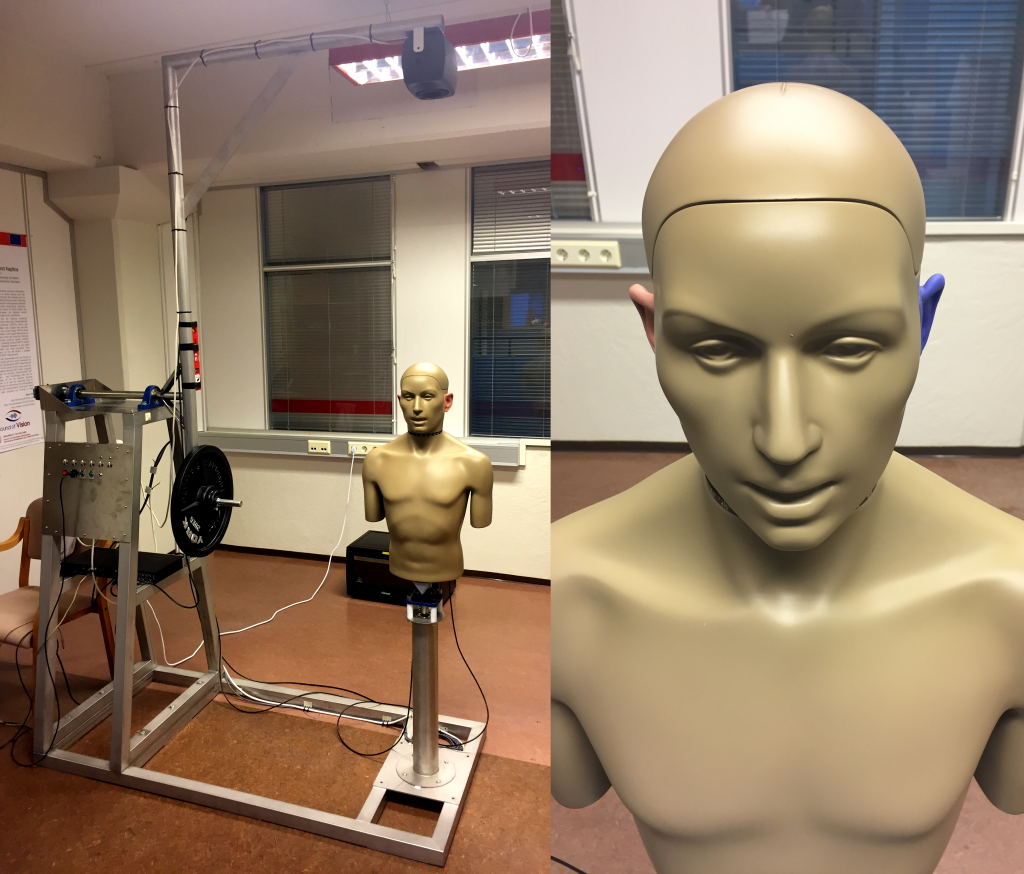(Release 1.1 – May 20, 2019)
Introduction
The Viking HRTF dataset is a collection of head-related transfer functions (HRTFs) measured at the University of Iceland. This includes full-sphere HRTFs measured on a dense spatial grid (1513 positions) with a KEMAR mannequin with 20 different artificial left pinnae attached, one at a time. The artificial pinnae were previously obtained through a custom molding procedure from 20 different lifelike human heads (courtesy of Ernst Backman, Saga Museum Reykjavík).
An overview of the methods and procedures of the HRTF measurement sessions can be found in the paper “The Viking HRTF dataset” presented at the 16th Sound & Music Computing Conference (May 2019, Málaga, Spain).
This web page contains the post-processed HRIR and ITD data from the measurement sessions. You can get the whole dataset here. A subset of the corresponding 3D pinna scans is also available here. More morphological data will be added soon.

Dataset Information
The dataset is organized in MATLAB data files (.mat), one per measurement session. The main directory contains the 20 .mat files corresponding to each of the 20 different custom-made pinnae (e.g. Subject_A.mat). The control_sessions directory includes the three control session files as described in the paper. Each .mat file contains two structures, HRIRs and ITD.
HRIRs is a 4-D matrix containing all the time-aligned impulse responses. The four dimensions of the matrix are:
- time (128 samples measured at 48 kHz sampling frequency);
- elevation (28 angles, ranging from -45 to 90 degrees in 5-degree steps);
- azimuth (72 angles, ranging from 0 to 355 degrees in 5-degree steps);
- ear (2 channels, left and right ear).
The elevation and azimuth angles are defined according to the classic vertical-polar coordinate system. Please note that not all combinations of elevation and azimuth correspond to a measured HRTF. This is because we reduced the number of measurements towards the upper pole of the sphere in order to get roughly uniform spatial density. NaN vectors code unavailable spatial positions, as well as corrupted measurements detected through careful inspection following post-processing (7 HRTFs in total, detailed in this file).

ITD is a 2-D matrix containing the interaural time difference (in samples) for each available HRTF, expressed through the corresponding elevation and azimuth indices as described above.
3D ear scans are available as .stl files. The scans were captured at 1mm resolution with a Creaform Go!SCAN 20 (courtesy of Create Prototyping Lab).
Update Information
- 2019/05/20 (v1.1): four 3D ear scans + sources added – open access
- 2019/03/28 (v1.0): full HRIR + ITD data – password protected
Use of Materials
The authors grant users permission to reproduce and/or use materials available therein for educational or research purposes. In addition, as a courtesy, if these materials are used in published research, this use should be acknowledged in the publication by citing the following source: Simone Spagnol, Kristján Bjarki Purkhús, Sverrir Karl Björnsson, and Rúnar Unnthórsson, “The Viking HRTF dataset”. In: Proceedings of the 16th Sound & Music Computing Conference (SMC 2019), pages 55-60, Málaga, Spain, May 2019.